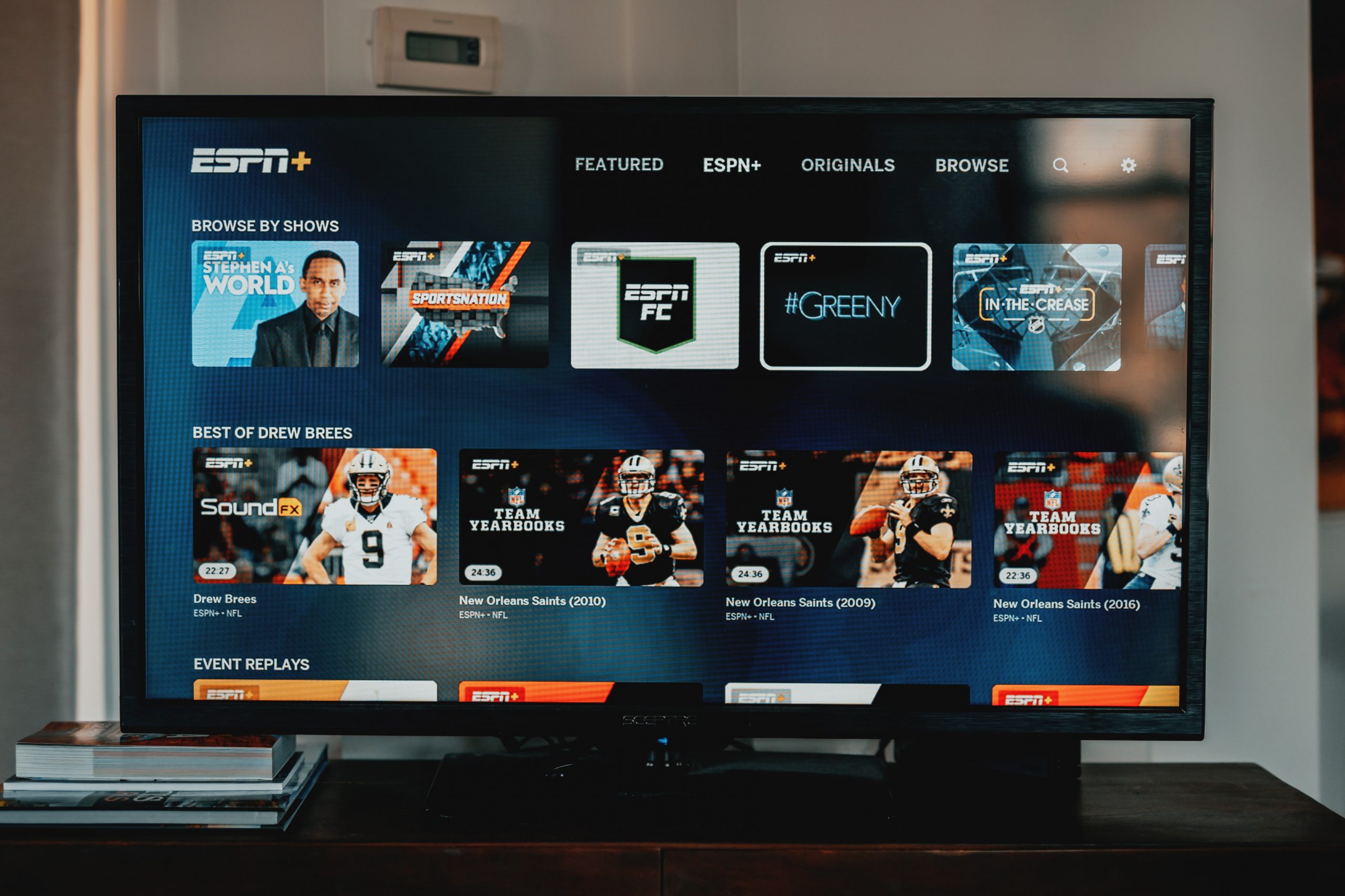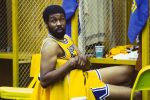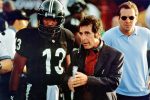When Ted Turner debuted Cable News Network, otherwise known as CNN, in the summer of 1980, a new precedent for news media was established. As the first 24-hour television news network, CNN ensured that a news story was available to any television set at any time of day. But it wasn’t until the mid-’90s, ironically because of the polarizing trial of sullied Hall of Famer O.J. Simpson, that other major networks adopted the 24-hour format and catered to television audiences’ insatiable appetite for content. Thereafter, entertainment and updates were available from the break of daylight to the dead hours of the night, sports coverage notwithstanding.
Despite debuting a year before CNN in 1979, Entertainment and Sports Programming Network (ESPN) offered a more repetitive rendition of the 24-hour cycle. The network proved a pioneer in the world of sports coverage, offering characters, analysis, steady content and, most importantly, access. Fans were hooked into the top highlights across the globe and the latest league reports in a way never before seen. ESPN was quickly exalted as the leader in sports coverage by catering to a wide range of fans while strengthening the connection between them, their highlights and favorite teams.
Most important to its early success was its central hub for programming: SportsCenter. The show covered a wide array of leagues, stories and trending topics in the sports world daily. It also allowed the color commentators and experts to collide in an otherwise casual setting. The SportsCenter Top Ten kept viewers glued to their screens until the end of each episode just to see the day’s most extraordinary athletic feats. It was a formula that allowed the network the flexibility to transition between game recaps, larger stories and highlight compilations while showcasing its distinct cast of ESPN anchors and analysts.
Never was this cast more revered than in the mid-’90s, alongside the growing prominence of the 24-hour news cycle. To name a few, the network introduced industry icons Dan Patrick, Keith Olbermann, Robin Roberts, Linda Cohn, Steve Levy, Brent Musburger, Rich Eisen, Rece Davis and the late Stuart Scott during ESPN’s golden era. Patrick and Olbermann co-anchored SportsCenter at the height of its powers, while other fresh and familiar faces coalesced under sport-specific programming. ESPN was thriving, and countless viewers would routinely roll out of bed in the morning, grab a bowl of cereal and flip on SportsCenter to catch up on last night’s action.
Now, there’s little reason to roll out of bed to catch the Top Ten. Those same recapped highlights are posted directly to our smartphones, available instantly and at our discretion. In fact, the daily highlights that viewers once feared missing are available anytime on YouTube. They’re even archived and neatly compiled from any given year. Users can share, comment or vote for their favorites and revisit them as they please.
Overall, the internet has empowered users with highlights to an even greater extent than ESPN did with its innovative format back in 1979. Still, the $28 billion+ company hasn’t entirely failed to adapt to the newfound accessibility. To its credit, ESPN boasts 20 million followers on Instagram. Yet, it’s their top show that garners the most engagement online. The SportsCenter account currently sits at nearly 25 million, likely due to users’ apt association of it with highlights. So, regardless of their rampant availability, SportsCenter remains one of the preeminent game highlight providers.
But ESPN and SportsCenter’s decline in recent years isn’t solely due to losing their monopoly on highlights. For one, the network has suffered from an industry-wide decline in traditional television viewership. To counteract that, ESPN began offering a subscription service, named ESPN+, in 2018. The service offers select games, advanced mobile options, private articles, original programming and other exclusive subscription features. However, it hasn’t stopped users from discontinuing their subscriptions in recent years, causing declines in company evaluations and layoffs earlier this year. The problem with ESPN isn’t its failure to adapt to technological shifts but rather its inability to evolve its core principles.
Now that everybody has a platform, there is an unlimited selection of sports opinions to sift through. Naturally, those opinions are expressed through an innumerable number of voices — flawed, unique, expressive and, at times, vulgar ones. Fans can follow whichever voices best fit their interests. Stat freaks can follow their analytic experts and lighthearted locker-room communicators can get their comedy fix alongside their sports intake. ESPN, a Disney property, cannot afford to fit either niche. The network prioritizes keeping content family-friendly, which also means easily accessible. As a result, its analysis can be neither too casual nor mathematical. Regardless of how much ratings reflect a lack of interest, SportsCenter must deliver on its proven formula while other talk shows rehash the same, inconclusive internet debates daily. ESPN is both stuck in its old ways and its own way — and its competitors are reaping the benefits.
Barstool Sports makes up just one of ESPN’s rivals in the realm of sports coverage and entertainment. Despite being a mere fraction of the size of the sports media giant, the budding company has seen its evaluation rise from $100 million in 2018 to $450 million three years later. Couple those figures with nearly 11 million Instagram followers, already half of ESPN’s primary account, and such a meteoric rise should rightfully concern the network. By appealing to the unprofessional side of sports entertainment, Barstool has won the industry’s comedic niche while existing solely on the internet. Some of its leading sports-centric podcasts include “Pardon My Take,” “Picks Central,” “Bussin’ With The Boys,” “Fore Play” and “Spittin’ Chiclets.” Complete with refreshingly off-color commentary, notable interviews, acknowledgment of sports betting, hit podcasts and an assembly line of talent resembling that of ESPN’s golden era, Barstool is a sleeping giant built for the internet age.
Similarly, The Ringer has seemingly filled the analytical niche that ESPN failed to. Founded by former ESPN contributor Bill Simmons, The Ringer invites natural dialogue in a professional yet relaxed setting. Imagine ESPN with stripped-down production value, greater freedom of speech and a further appreciation for advanced statistics. The Ringer appeals to the truly invested sports fan, who can only gain so much from the repetitive segments and inconclusive bantering of debaters on ESPN and Fox Sports 1. Of their original content, two podcasts from Simmons and Ryen Russillo (another former ESPN contributor) make for some of the best basketball listening experiences along with “The Mismatch.” Additionally, The Ringer even offers content beyond the sports world, including the pleasant “The Big Picture” and “The Watch” podcast with Chris Ryan and Andy Greenwald.
These examples don’t even begin to touch on the selection of individualized sports content creators rapidly surfacing on YouTube, whose distinct quirks and personal relationships with viewers allow for inside jokes alongside their genuine commentary. The NBA, NFL and MLB communities all have strong content and interrelations on YouTube, allowing for collaborative topics and innovative approaches to the medium. The only things they lack relative to ESPN are production value and established viewership. Their drive, authenticity and uninhibited discourse make for a much more pleasant, free-form viewing experience and it’s available anytime.
New-age content and the internet revealed that television audiences’ affinity for ESPN was more out of reliance than actual attachment, at least in recent years. ESPN has proven slow to adapt to shifts in form and unwilling to take the steps to truly recover thereafter. Even in 2016, when it announced a late-night version of SportsCenter with fan-favorite Scott Van Pelt, the move smelled of desperation and failed to regain any sustained audience, especially from younger demographics. The late-night talk show style was a middling compromise between the comedic expression enabled through outlets like Barstool and the network’s professional roots.
The unfortunate truth is that significant changes are needed for ESPN to hold the same resonance with the new generation as it held in its heyday. Stephen A. Smith and Scott Van Pelt aren’t enough to offset the highlights and niches available at our fingerprints. Setting the larger hurdles for network television aside, ESPN needs to loosen up its rulebook if it hopes to score viewers in the years ahead.

















